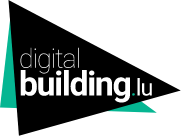Objective and deliverables
The aim of the APD phase is to finalize the architectural response in order to submit it to the various authorizations and to the project owner for approval. The design team evolves the models so that the various views produced (whether 2D geometries or 3D views) represent the reality of the project.
- The deliverables are as follows:
- Plans, sections and facades (scale 1:100) + structural and network plans, pdf format
- Subdivision plan in pdf format
- Various 3D views in usable format (pdf, jpeg, png…)
- Simulations
- Cost estimates
- Roombook (designed spaces)
Processes to be implemented
A/ If it hasn’t already been done, the structural engineer models the site, so as to be able to do away with 2D plan backgrounds and integrate any modifications resulting from the project. If, for example, a road is to be created (or a watercourse created), this can be integrated into the model to generate the plans required for the corresponding authorization application (see next phase). It is not necessary to achieve a high level of detail, but the right dimensions will provide a sufficiently representative visualization of the project.
B/ The architect adds/completes building details such as :
- the composition of walls, slabs, roofs… including finishes, openings, technical ducts, installation of joinery…
- staircase and elevator design…
- furniture design
C/ The technical engineer refines the modeling of the various networks, in particular by placing the equipment, drawing the ducts with their correct dimensions, drawing the various connections, etc. He no longer proceeds by drawing schematic diagrams, but creates a fully-fledged technical model. By superimposing the architectural model and the technical model, any problems of interaction can be identified and resolved (“conflict prevention” BIM usage).
D/ The structural engineer adds the implementation details relating to his study to his model, checking that the structural system is fully compatible with the architectural proposal AND the technical proposal, also by superimposing the models.
E/ Each model must therefore also :
- Contain the information needed to evaluate the project in terms of performance (technical information) and to manage it (price, availability, service life, etc.).
- Be linked to useful reference documents, including photos and data sheets
F/ As far as safety is concerned, the aim is to produce a principle plan with compartmentalization (data normally defined in the APS) and positioning of smoke extraction devices, sprinklers and fire extinguishers. These elements can be added :
- As part parameters. The information should then appear on the drawing.
- As objects that can then be modelled and placed in an approximate way and associated with data produced for their management.
G/ Updating the Roombook therefore integrates the various data attributed to the spaces and structures designed in each of the models. The challenge is to be able to compare it with the version produced in the programming phase to check that the requirements have been met. As a reminder, here is a coherent but non-exhaustive list of the data it contains:
- Wall, floor and ceiling finishes
- Fire resistance of walls, floors and ceilings
- Fire resistance and smoke-tight doors
- Permissible slab load
- Net room height
- Temperature requirements
- Humidity
- Ventilation required
- Brightness
- Number of electrical, telephone and data sockets…
- …
H/ In their current state of development, the models can be used to export a realistic survey of the surfaces and volumes of the building being designed, as well as the structures, equipment and furnishings selected. On the basis of this information, more precise quantities and estimates can be proposed to feed into the calculation of project costs. Simulations not carried out during the APS phase due to lack of information can be carried out during the APD phase, thanks to the model’s greater precision. If parameters are missing, they must be added. The model’s precision also enables the generation of more realistic presentation mock-ups.
Profitability studies are based on the use of alternative solutions, which must be managed with the same level of detail as defined above.
Responsibility for “BIM Management”
The information manager checks the information delivered and its conformity with the BEP. In this way, he guarantees to the client that the information requested has been delivered. The BIM Manager updates the BEP for any changes decided by consensus and involving modification of the BEP (actors, EIR, etc.). He leads BIM coordination meetings. He evaluates the process, provides feedback and validates deliverables at each milestone. In this way, he ensures that the information to be delivered complies with the Owner’s expectations. The BIM Manager’s specific tasks include model checking and transmitting comments via BCF. A particular challenge here is to anticipate future checks during approval procedures by setting up “automatic checking rules” (e.g. checking the height of all railings) on the models. This will save time and avoid lengthy approval procedures in the event of errors.
